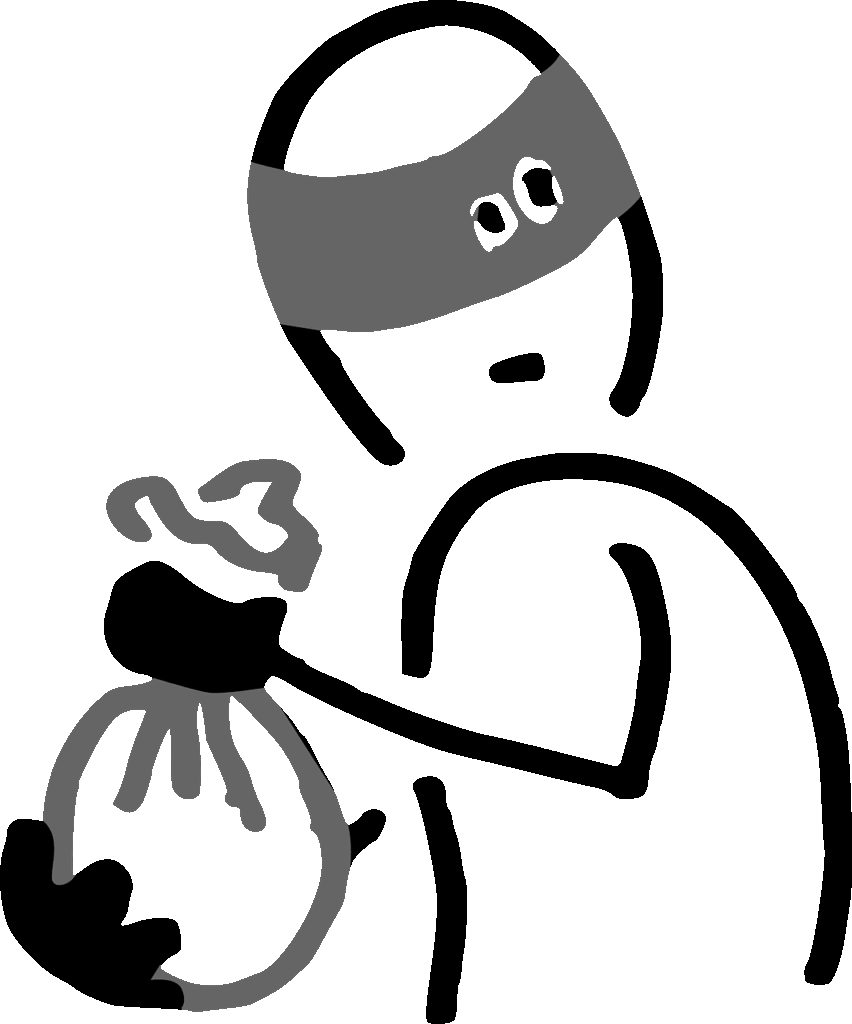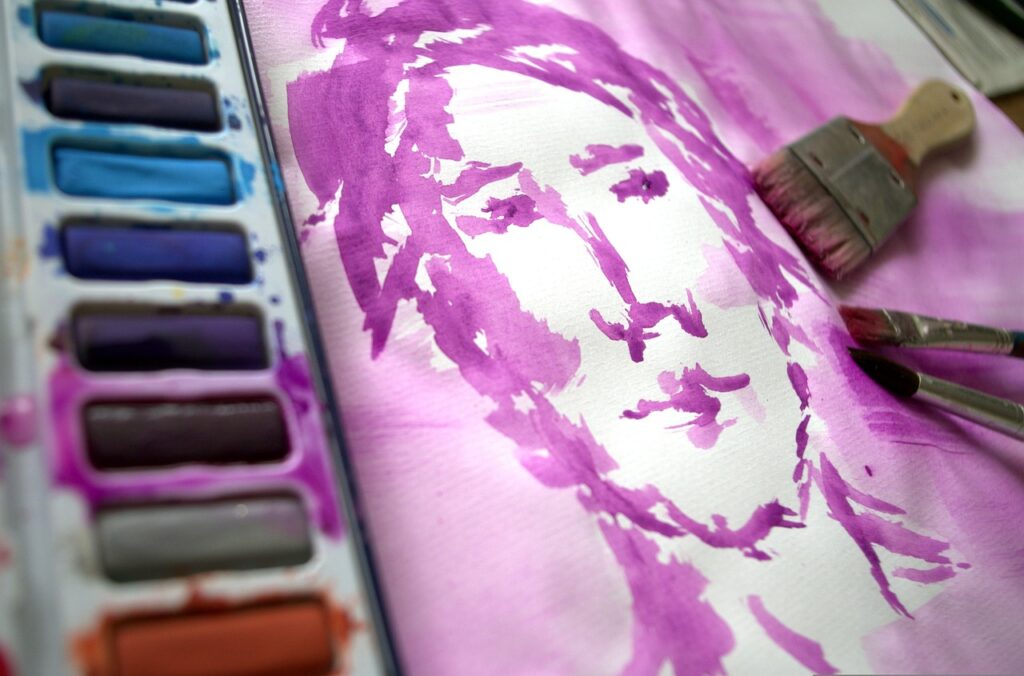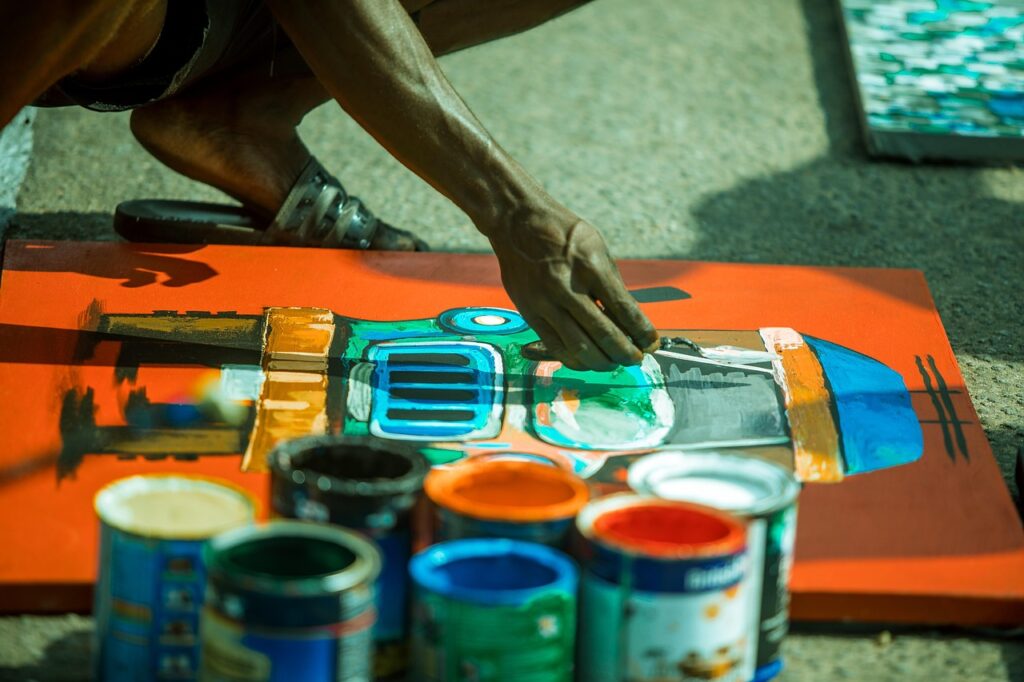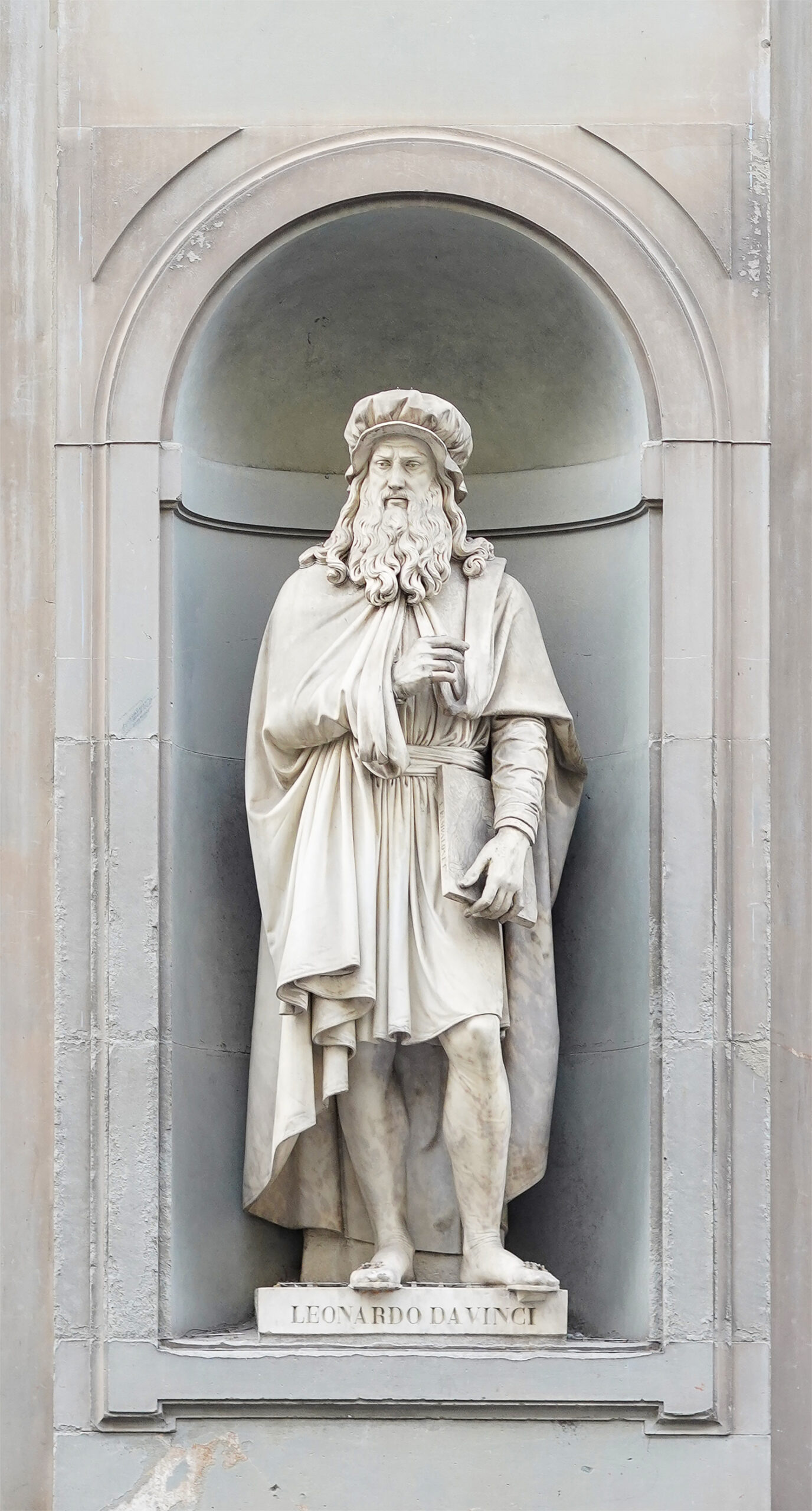
We all think we know Leonardo. You know, the “Mona Lisa” guy, the Renaissance genius who basically invented everything from flying machines to tank designs hundreds of years too early. He’s on all the history books, the ultimate polymath, the kind of legendary figure whose name is synonymous with brilliance and innovation. But what if we told you there’s a whole lot more to this iconic figure than just his artistic masterpieces and scientific breakthroughs?
The truth is, behind the canvases and the anatomical sketches, Leonardo da Vinci lived a life that was, by the standards of his time and ours, pretty darn unconventional. Forget the polished academic texts for a moment; we’re talking about the kind of personal details that would absolutely break the internet if they happened today. From his family origins to his most intimate relationships, Leo was serving up drama and intrigue long before reality TV was even a glimmer in anyone’s eye.
So, buckle up, because we’re about to take a deep dive into some truly eyebrow-raising aspects of da Vinci’s world. We’re digging into the juicy bits, the head-scratching moments, and the persistent rumors that still make us go “Hmmmm.” Get ready to see the Renaissance master in a whole new light, because when it comes to living an extraordinary life, Leonardo da Vinci was absolutely *that guy*. Let’s get into it!
1. **A Humble and Unconventional Start: The Illegitimate Birth that Rocked the Renaissance (Kind Of)**
Let’s kick things off right at the beginning, shall we? You might imagine a genius like Leonardo springing forth from some noble, perfectly structured family, but nope! Our guy was born “out of wedlock to a successful notary and a lower-class woman in, or near, Vinci.” Talk about a humble — and for the 15th century, a pretty scandalous — start to life for one of history’s greatest minds. His father, Ser Piero da Vinci, was a Florentine legal notary, and his mother, Caterina di Meo Lippi, was described as “from the lower class.”
This isn’t just a fun fact; it likely shaped much of his early existence. Born on April 15, 1452, in the Tuscan hill town of Vinci, Italy, Leonardo was properly named Leonardo di ser Piero da Vinci, essentially meaning “Leonardo, son of ser Piero from Vinci.” It was an indicator of his birthplace, not a family name, which subtly underscores his unique position outside the typical aristocratic lineage and the societal expectations of the era.
The year after his birth, both of Leonardo’s parents moved on with their lives, marrying other people. His mother, Caterina, married a local artisan, while his father, Ser Piero, embarked on a series of three subsequent marriages after his first wife passed away. This meant Leonardo eventually gained “16 half-siblings (of whom 11 survived infancy)” from his father’s various unions, making for a rather sprawling, albeit distant, family.
Can you imagine the family reunions? Probably not, because the context explicitly states that these half-siblings were “much younger than he (the last was born when Leonardo was 46 years old) and with whom he had very little contact.” So, while his family tree blossomed, Leonardo remained somewhat of an outsider, a detail that surely contributed to his independent spirit and perhaps even his relentless pursuit of knowledge outside conventional academic paths. It’s a testament to his innate genius that he transcended these origins to become one of history’s most revered figures.

2. **The Mystery of His Heart: Why Were There So Few Leading Ladies in Leonardo’s Life?**
When we think of great historical figures, especially artists, tales of passionate romances and muses often come to mind. Think of the scandalous love affairs and dramatic declarations that fill countless biographies. But when it comes to Leonardo da Vinci, his love life with women reads more like a footnote than a passionate chapter. The historical records are pretty clear on this point, causing many to scratch their heads.
The context reveals that “Leonardo appears to have had no close relationships with women except for his friendship with Cecilia Gallerani and the two Este sisters, Beatrice and Isabella.” Hold up, *no close relationships* beyond friendships? That’s definitely a head-scratcher for a man of his stature, especially one celebrated for capturing human emotion with such profound depth on canvas. It’s a striking absence in the narrative of his private life.
These friendships were significant, yes. Cecilia Gallerani is presumed to be the subject of his iconic “Lady with an Ermine,” a portrait that’s utterly breathtaking and reveals an incredible connection between artist and sitter, even if platonic. It’s even described as “Leonardo’s most remarkable portrait of this period.” He also captured the likeness of Isabella d’Este, drawing a portrait of her “that appears to have been used to create a painted portrait, now lost.” These were powerful, influential women, and he clearly admired them.
However, the nature of these connections seems to have remained strictly platonic, existing “beyond friendship” for what we know from the available records. The context emphasizes that “Leonardo kept his private life secret,” especially concerning matters of the heart. This isn’t just an absence of evidence; it’s a pointed observation that for someone so widely observed and documented, a significant romantic life with women simply isn’t there in the historical accounts. This lack of traditional romantic entanglements with women stands in stark contrast to many of his contemporaries and has fueled centuries of speculation, forming a crucial part of the puzzle when we try to understand the man behind the masterpieces.
3. **Scandal in Florence: The Explosive Sodomy Charges of 1476**
Okay, if you thought an illegitimate birth was spicy, prepare for some serious Renaissance-era scandal that could headline today’s tabloids! In 1476, at the tender age of twenty-four, Leonardo da Vinci found himself embroiled in a shocking legal drama that rocked Florence. “Court records show that Leonardo and three other young men were charged with sodomy in an incident involving a known male prostitute.” Yes, you read that right. This wasn’t just some whispered rumor in the streets; it was a formal accusation recorded in official documents.
The charges were incredibly serious in Renaissance Florence, punishable by death in some cases. While the specific details of the “incident” remain shrouded in time, the fact that it involved “a known male prostitute” immediately paints a picture of a subculture operating beneath the city’s pious, artistic surface. For a rising artist like Leonardo, such an accusation could have been career-ending, or much, much worse, jeopardizing his very existence and future.
So, what happened to our genius? The context tells us the charges were ultimately “dismissed for lack of evidence.” But here’s where it gets even more intriguing and hints at the powerful forces at play: “there is speculation that since one of the accused, Lionardo de Tornabuoni, was related to Lorenzo de’ Medici, the family exerted its influence to secure the dismissal.” The Medici family, who were the most powerful patrons in Florence, potentially pulling strings to get Leonardo and his associates off the hook? Now *that’s* some serious political maneuvering and a classic tale of power protecting its interests!
This incident, regardless of its outcome, cast a long shadow over Leonardo’s personal narrative and ignited centuries of debate. “Since that date much has been written about his presumed homouality and its role in his art, particularly in the androgyny and eroticism manifested in Saint John the Baptist and Bacchus and more explicitly in erotic drawings.” It became a foundational piece of the puzzle for understanding his personal life, artistic inclinations, and the enduring mystery of his sexuality. It’s a moment that continues to spark discussion and dissection among art historians and biographers alike, proving that even centuries later, some secrets just refuse to stay buried.
4. **His “Little Unclean One”: The Unruly Enigma of Salaì**
Every genius seems to have a controversial sidekick, right? For Leonardo da Vinci, that role was famously filled by Gian Giacomo Caprotti da Oreno, more commonly known as Salaì. His memorable nickname, “Il Salaino,” playfully translates to “The Little Unclean One,” or even “the devil” – and honestly, the context paints a pretty vivid picture of why he earned that moniker! Salaì “entered Leonardo’s household in 1490 as an assistant,” setting the stage for a relationship that would surprisingly last for three decades.
But Salaì wasn’t your average, dutiful apprentice, quietly honing his skills. Oh no. The context bluntly reveals that “After only a year, Leonardo made a list of his misdemeanours.” Can you imagine keeping a literal naughty list for your assistant, meticulously detailing their transgressions? This wasn’t just a casual jotting down of minor annoyances; Leonardo was quite explicit, “calling him ‘a thief, a liar, stubborn, and a glutton,’ after he had made off with money and valuables on at least five occasions and spent a fortune on clothes.” Five occasions of theft! This kid was undeniably a handful, a true Renaissance delinquent causing headaches.
It makes you wonder, why would Leonardo keep someone around who was constantly causing trouble, stealing, and draining resources? Salaì’s questionable financial habits alone were enough to raise an eyebrow, with him frequently spending “a fortune on clothes” when he was supposed to be learning the ropes from the greatest artist and innovator of his time. This behavior tells us a lot, not just about Salaì’s wild nature, but perhaps even more about Leonardo’s incredible patience, or a deeper, more profound connection that superseded practical concerns.
The very fact that Leonardo meticulously documented these transgressions in his private notebooks hints at a complex, deeply personal dynamic within his household. Salaì was clearly more than just an employee; he was a persistent, albeit troublesome, fixture in Leonardo’s world, despite his myriad faults. This turbulent yet enduring relationship is one of the most intriguing aspects of Leonardo’s personal life, offering a glimpse into the human side of a man often seen as almost god-like in his intellect and composure.

5. **Unwavering Indulgence: Why Leonardo Kept “The Little Unclean One” Around for Decades**
So, we’ve established that Salaì was, to put it mildly, a bit of a nightmare assistant. He was a thief, a liar, stubborn, a glutton, and frequently spent money he shouldn’t have, causing significant trouble for his master. Yet, here’s the kicker that truly makes you pause: “Nevertheless, Leonardo treated him with great indulgence, and he remained in Leonardo’s household for the next thirty years.” Thirty years! That’s a lifetime for many, spent tolerating someone who consistently caused headaches and financial woes. What exactly was the secret sauce to this incredibly enduring, if complicated, bond?
This unwavering indulgence is a major point of fascination and ongoing speculation for historians and fans alike. For an artist and engineer who was known to be meticulous in his work and often prudent with his finances, this level of tolerance for Salaì’s persistent misbehavior suggests a bond that went far beyond a typical master-apprentice relationship. It strongly implies a deep affection, a personal connection so powerful that it superseded practical concerns or even basic professional decorum in a way few other relationships in history have.
Furthermore, Salaì wasn’t just a live-in delinquent; he was also involved in Leonardo’s artistic life, albeit with decidedly limited success. The text notes that “Salaì executed paintings under the name of Andrea Salaì, but although Vasari claims that Leonardo ‘taught him many things about painting,’ his work is generally considered to be of less artistic merit than others among Leonardo’s pupils, such as Marco d’Oggiono and Boltraffio.” So, he wasn’t even a standout student, which makes Leonardo’s prolonged commitment to him and his consistent indulgence even more striking and mysterious.
Perhaps one of the most telling details, hinting at the intimacy of their connection, is the suggestion that Salaì might have served as a model for some of Leonardo’s most iconic works. The context points out that for “Saint John the Baptist,” a painting from around 1507–1516 now housed in the Louvre, “Leonardo is thought to have used Salaì as the model.” If true, it means Salaì’s face and form are immortalized in one of the master’s most famous, and often enigmatic, creations. This prolonged, indulgent, and artistically intertwined relationship with a troublesome youth is a unique chapter in Leonardo’s personal story, leaving us to ponder the true depths of his feelings and the nature of enduring affection.

6. **More Than a Pupil: The “Loving and Passionate” Bond with Francesco Melzi**
While Salaì certainly brought a fair share of drama and mischief to Leonardo’s life, another pupil, Francesco Melzi, appears to have brought a profound, stabilizing intimacy to the master’s later years. Melzi, described as “the son of a Lombard aristocrat,” joined Leonardo’s orbit in Milan in 1506 and quickly distinguished himself, becoming known as “his favourite student.” This distinction alone sets him apart from Salaì and Leonardo’s other apprentices, hinting at a special bond from the outset.
Their connection was clearly far more than just professional mentorship. The text highlights that “Leonardo was accompanied during this time by his friend and apprentice Francesco Melzi, and was supported by a pension totalling 10,000 scudi.” Melzi wasn’t merely an assistant; he was a constant companion, a trusted friend, and a crucial presence in Leonardo’s final years in France, living with him at the manor house Clos Lucé. It was even Melzi who drew a portrait of Leonardo during his lifetime, a precious glimpse into the master’s appearance in his later years, underscoring their closeness.
The true depth and nature of their relationship are perhaps most profoundly revealed in Melzi’s own words, penned after Leonardo’s passing. After Leonardo’s death, “Melzi, writing to inform Leonardo’s brothers of his death, described Leonardo’s feelings for his pupils as both loving and passionate.” This isn’t a casual observation from an outsider; it’s a direct, emotional testimony from the person closest to Leonardo at the very end of his life, describing profound emotional ties that speak volumes about their connection.
Furthermore, Melzi was named “the principal heir and executor,” receiving “as well as money, Leonardo’s paintings, tools, library and personal effects.” This was an enormous trust placed in Melzi, far exceeding what would typically be bestowed upon an apprentice, especially when Leonardo had several half-siblings. This act, coupled with Melzi’s description of “loving and passionate” feelings, strongly supports claims that “these relationships were of a ual or erotic nature.” Indeed, while the context specifies that “Walter Isaacson in his biography of Leonardo makes explicit his opinion that the relations with Salaì were intimate and homosexual,” the broader context of presumed homosexuality applies to these deep, intimate pupil relationships as well. The bond with Melzi offers one of the clearest windows into Leonardo’s capacity for deep, enduring, and perhaps even romantic affection, proving that his personal life was just as complex and fascinating as his groundbreaking art and science.
7. **A Hidden ‘Joconda’? Salaì’s Mysterious Painting That Could Reframe Everything**
Okay, so we’ve talked about Salaì, Leonardo’s ‘Little Unclean One,’ the mischievous apprentice who was, let’s face it, a bit of a handful. But what if we told you this same troublesome figure might hold a secret that could add another layer of intrigue to Leonardo’s most famous masterpiece, the Mona Lisa? Get ready, because this is where things get seriously juicy, and it’s not just idle speculation. This is about actual documented possessions.
Here’s the deal: at the time of Salaì’s death in 1524, his posthumous inventory listed a painting simply referred to as ‘Joconda.’ Yes, you heard that right – ‘Joconda,’ just like the alternative name for Leonardo’s iconic ‘Mona Lisa.’ But here’s the part that really makes you lean in: this small panel portrait was ‘assessed at 505 lire,’ which was an ‘exceptionally high valuation’ for a painting of its size during that era. That’s a serious chunk of change, making it clear this wasn’t just some random piece of art.
Now, before you start hyperventilating, remember that Leonardo himself was working on a portrait of Lisa del Giocondo, the model for the Mona Lisa, which he famously continued until his later years. The fact that Salaì, who was so intimately connected to Leonardo’s life for three decades, possessed a painting with the same name and such a high valuation is, well, *suspiciously* interesting. Could it have been an early version? A copy? Or, dare we suggest, a different ‘Joconda’ altogether, perhaps one with Salaì as the model, given their unique bond?
This isn’t just about a painting; it’s about the echoes of a deep, complicated relationship. The very existence of this ‘Joconda’ in Salaì’s possession throws another tantalizing question mark into the already mysterious narrative of Leonardo’s personal life and his art. It hints at connections and influences that we’re still trying to fully unpack centuries later, proving that even the ‘Little Unclean One’ had his own secrets to spill, long after the master was gone.
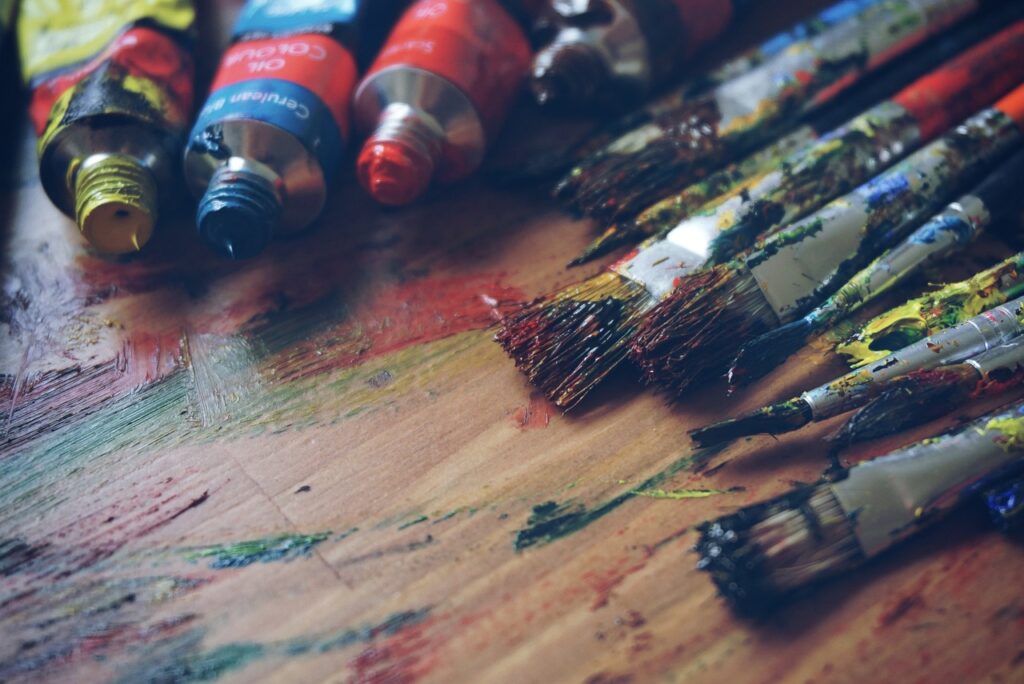
8. **The Artistic Implications: When His Inner World Spilled Onto the Canvas**
After diving into Leonardo’s intimate relationships and the scandalous charges he faced, it’s pretty hard to ignore the elephant in the room: how did his presumed homouality influence his unparalleled art? Because, let’s be real, you don’t live a life this unconventional without it leaving some kind of mark on your creative output, especially when you’re a genius like da Vinci. And for him, that mark is pretty evident in some truly iconic pieces.
The historical record explicitly states that ‘much has been written about his presumed homouality and its role in his art, particularly in the androgyny and eroticism manifested in Saint John the Baptist and Bacchus and more explicitly in erotic drawings.’ This isn’t just art critics trying to stir the pot; it’s an observation based on the visual evidence within the works themselves. The way he blurred traditional gender lines, creating figures that are both alluring and ambiguous, is a distinct characteristic.
Take ‘Saint John the Baptist,’ for example. This painting, created between 1507 and 1516, features a figure with an enigmatic smile and delicate features that have led countless viewers to describe it as androgynous. And here’s the kicker: ‘Leonardo is thought to have used Salaì as the model’ for this very painting. Imagine that – the mischievous ‘Little Unclean One’ immortalized with such sensual grace, suggesting a profound personal connection that transcends the typical artist-sitter dynamic and injects a layer of intimate knowledge into the art.
This isn’t just about identifying models; it’s about understanding how an artist’s personal experiences and affections can deeply infuse their work, shaping not just the subject matter but the very emotional and aesthetic quality of the piece. Leonardo’s presumed uality isn’t just a biographical footnote; it’s a lens through which we can gain a deeper appreciation for the complex beauty and subtle power embedded in some of his most profound artistic statements. He wasn’t just painting what he saw; he was painting what he felt and who he connected with.
9. **A Modern Sensibility: Leonardo, the Compassionate Vegetarian Ahead of His Time**
Okay, so we’ve established Leonardo was a genius, an inventor, an artist, and a man with a *very* interesting personal life. But what if we told you he was also a remarkably progressive thinker when it came to something as fundamental as food and animal welfare? Prepare for another moment of ‘Wait, he did *that*?’ because da Vinci was arguably centuries ahead of his time in his compassion for animals.
The context explicitly highlights ‘his love for animals, likely including vegetarianism and according to Vasari, a habit of purchasing caged birds and releasing them.’ Seriously, stop and think about that for a second. In 15th-century Italy, a time when animal rights weren’t even a concept, Leonardo was reportedly buying birds just to set them free. That’s not just a nice gesture; it’s a profound act of empathy that speaks volumes about his character and his philosophical outlook on life itself.
His probable vegetarianism is another fascinating detail that positions him as an outlier in his era. While the reasons behind his dietary choices aren’t fully detailed in the provided context, the mere fact that he ‘likely’ adhered to such a practice underscores his unique worldview. It wasn’t about trendsetting; it was about a deep-seated respect for life, a sensibility that feels incredibly modern and resonates strongly with today’s ethical considerations regarding food and environmentalism.
This isn’t just a quirky habit; it’s a vital piece of the puzzle that helps us understand the man behind the genius. Leonardo wasn’t just observing the world with scientific rigor; he was engaging with it on a profoundly ethical and emotional level. His compassion for animals, his desire to free them, and his potential vegetarianism paint a picture of a man who saw the interconnectedness of all living things, a trait as remarkable as his ability to invent flying machines. He truly was a polymath of empathy, proving that genius isn’t just about the intellect, but also about the heart.
10. **Eccentricities of a Genius: When Da Vinci’s Imagination Went *Really* Wild**
Beyond his iconic paintings and groundbreaking scientific sketches, Leonardo da Vinci was also a master of the utterly bizarre and wonderfully whimsical. If you thought his personal life was eyebrow-raising, wait until you hear about some of his more peculiar side projects. This guy wasn’t just designing tanks and anatomical charts; he was also dabbling in creations that sound straight out of a fantasy novel, proving his imagination knew literally no bounds.
One delightful anecdote from the context tells us that in Rome, ‘according to Vasari, decorated a lizard with scales dipped in quicksilver.’ Yes, a lizard! Imagine being Pope Leo X’s brother, Giuliano, and hosting this legendary genius, only to find him meticulously adorning a reptile with shimmering mercury. It’s an image that’s both bizarre and utterly captivating, showcasing a playful, experimental spirit that extended to the most unexpected corners of his life. It speaks to a mind that saw art and wonder in everything, even a common lizard.
But that’s not all. During his final years in France, living at Clos Lucé under the patronage of King Francis I, Leonardo conjured up another marvel: ‘a mechanical lion, which during a pageant walked towards the King and – upon being struck by a wand – opened its chest to reveal a cluster of lilies.’ How cool is that?! Forget fireworks; Leonardo was creating animatronic wonders for royal entertainment. This wasn’t merely a trick; it was a testament to his engineering prowess combined with an artist’s flair for the dramatic and magical.
These aren’t just trivial footnotes; they reveal a side of Leonardo that reminds us he was a human being bursting with curiosity and a penchant for delightful eccentricities. These inventions, while not as historically impactful as the Mona Lisa or his anatomical drawings, offer a precious glimpse into the joyful, imaginative, and truly unconventional spirit of a man who continually sought to amaze, understand, and bring wonder into the world, whether through a meticulously painted portrait or a walking, chest-opening lion. He wasn’t just a genius; he was an absolute showman, too!

11. **The Unfinished Masterpieces: A Paralysed Hand’s Tragic Impact on an Icon**
Leonardo da Vinci’s career, while filled with unparalleled achievements, also features a surprising number of unfinished works. While some were abandoned due to new commissions or his restless curiosity, there’s a heartbreaking reason for the incompletion of some significant pieces in his later life, a detail that adds a profound layer of human vulnerability to his legendary status. Imagine a master artist, his mind still overflowing with ideas, but his hand unable to execute them.
The context reveals a poignant truth about his twilight years: records ‘confirm an account of Leonardo’s right hand being paralytic when he was 65.’ This isn’t just a minor ailment; for an artist, the loss of function in a dominant hand is catastrophic. A drawing by Giovanni Ambrogio Figino, depicting ‘an elderly Leonardo with his right arm wrapped in clothing,’ visually reinforces this tragic reality. It’s a stark reminder that even the greatest minds are subject to the frailties of the human body.
And here’s where it connects to one of his most beloved works: this paralysis ‘may indicate why he left works such as the Mona Lisa unfinished.’ Think about that. The most famous painting in the world, renowned for its elusive smile, might have been worked on until the very end, not because he couldn’t perfect it, but because he physically couldn’t complete it to his exacting standards. It wasn’t a lack of vision; it was a devastating physical limitation that robbed him, and us, of what could have been even more extraordinary details.
This tragic impairment casts a long shadow over his final creative period, reminding us of the profound link between physical ability and artistic output. It makes you wonder how many other masterpieces were conceptualized but never fully realized because of this cruel twist of fate. Leonardo’s genius was boundless, but his physical being, in the end, had its limits, leaving us to ponder the silent struggles of a polymath whose final strokes were perhaps forever etched only in his mind.
12. **Deathbed Confessions: What a Genius Regrets in His Final Moments**
Even a mind as monumental as Leonardo da Vinci’s, a man who redefined art and science, was not immune to the profound reflections and regrets that often accompany the very end of life. As he lay on his deathbed at Clos Lucé, surrounded by those who loved him, Vasari, his early biographer, gives us a glimpse into the genius’s final thoughts, and they are, to say the least, incredibly poignant and deeply human.
Vasari describes Leonardo ‘lamenting on his deathbed, full of repentance, that “he had offended against God and men by failing to practice his art as he should have done.”’ Can you even wrap your head around that? A man who gave us the Mona Lisa, The Last Supper, and countless inventions, felt he had *failed* to practice his art as he should have. It’s a statement that speaks volumes about his incredibly high standards, his perhaps impossible quest for perfection, and the deep internal pressure he must have felt throughout his life.
It’s not just a casual regret; it’s framed as a profound repentance. Vasari further records that in his last days, ‘Leonardo sent for a priest to make his confession and to receive the Holy Sacrament.’ This act of seeking spiritual reconciliation in his final moments adds another layer to his complex character. It suggests a man grappling with his conscience, perhaps reflecting on the unconventional paths his life and art had taken, or the many projects he started but left unfinished.
What truly lay behind these confessions? Was it the weight of his unfulfilled ambitions, his revolutionary ideas that went unpublished, or perhaps the social implications of his personal life? We can only speculate, but these deathbed reflections offer a rare, vulnerable insight into the mind of a man who was always pushing boundaries. Even in his final breaths, Leonardo da Vinci reminds us that beneath the genius lay a deeply reflective and ultimately human soul, seeking peace and perhaps forgiveness for a life lived extraordinarily and unapologetically on his own terms.
So, there you have it. From his scandalous birth to his mysterious ‘Joconda,’ his surprising compassion for animals, and even his deathbed regrets, Leonardo da Vinci was anything but ordinary. He wasn’t just a painter or an inventor; he was a living, breathing enigma, a true Renaissance rockstar whose personal life was as captivating and boundary-pushing as his art and science. His story isn’t just about historical facts; it’s about the enduring power of a human being who dared to live, love, and create in ways that continue to fascinate, provoke, and inspire us centuries later. And isn’t that just the kind of brilliant, messy, unforgettable legacy we all secretly aspire to?



